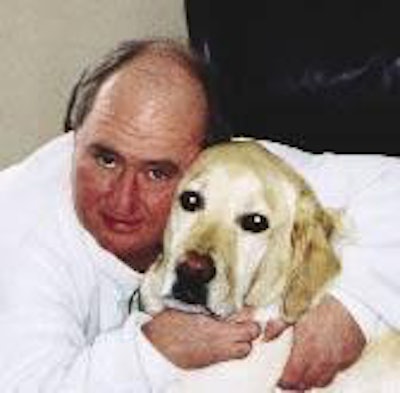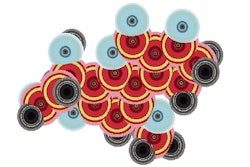
What's the state of the petfood industry today, and where is it headed? Petfood Industry magazine recently asked several industry leaders for their insights. Here is some of what they had to say.
What's best inside: Jim Scott, Old Mother Hubbard
Jim Scott Jr. is the CEO of Old Mother Hubbard in Chelmsford, Massachusetts, USA. He tells Petfood Industry that he is especially proud of the company's Wellness brand. Scott notes, "The brand was conceived about 10 years ago. My family has an 11-year-old Yellow Lab named Boomer. When he was about a year old, and we had three small children, he had several health problems. Our veterinarian told me that the dog had serious health issues and probably would not live a long life."
Scott decided he wanted to see if a change in diet could help. He talked with his people about making the healthiest petfood possible. They brought in a PhD in animal nutrition, a holistic veterinarian and a PhD in human nutrition. "We came up with a diet," Scott remembers, "but there were concerns about it costing too much. I did not want to worry about cost. I believed that if we made the right diet, one that would be best for the inside of the pet, we would sell it. That turned out to be true."
When asked to assess the state of the petfood industry, rather than repeat others' points about the humanization of pets and petfoods and the fragmentation of retail channels, he says, "The industry will become more fragmented as pet owners seek out customized dietary solutions for their pets. That's why we believe that people who sell our petfoods should be trained to give proper advice to pet owners."
Regarding challenges he faces, Scott notes, "We get pressure to add products to increase shelf space, but we will not play the 'real estate' game. Any new products that we introduce must provide real dietary solutions for our four-legged friends. In doing that, we build a defensible and sustainable consumer franchise for the independent retailer. We also know we could turbo-charge palatability by using certain ingredients, but we are committed to do what's best for the inside of the pet."
To illustrate his point, Scott recounts a recent visit he and Boomer made to the hospital. They visited a young man who had sustained brain damage about six months before. According to the man's mother, it was the first time her son reacted to his surroundings. "He related to Boomer, instead of having a blank stare," says Scott. "That's just one example of the tremendous value of pets."
Opportunity vs. regulations: Dr. Jürgen Wigger, Bewital
Dr. Jürgen Wigger is the general manager of the petfood company Bewital in Südlohn-Oeding, Germany. He notes that in Western Europe, companies are not seeing much volume growth but are noticing a shift from leading brands to niche products. "One important reason for this," says Wigger "is the intense communication of pet owners via the Internet, leading to groups of customers with very specific requirements." This means smaller production batches and opportunities for medium-sized producers like Bewital.
In most Eastern European markets, Bewital is seeing strong volume growth. But, due to relatively low incomes there, the growth is mainly in economy products. Furthermore, the aggressive expansion of large, international grocery chains (Carrefour, Tesco, etc.) favors the development of robust store brands. "Medium-sized producers have to decide if they want to be in business with large grocery chains or maintain their niche strategy," says Wigger. "We have chosen the niche option. It will require patience and persistence, but we are confident this strategy will pay off in the long term."
Wigger went on to predict:
The structure of markets will become more similar in different countries. Especially in larger cities, Bewital is seeing fewer differences between developed and developing countries.
The overall size of the market will increase substantially due to the growth in less developed markets.
The desire of customers to treat their pets especially well will lead to niche markets. Thus, the premium segment will have to have the flexibility to produce smaller batches.
When talking about potential problems, Wigger cites:
Poor products possibly damaging the image of industrial petfoods.
More governmental regulations that will make it more difficult to explain product differences. "This could lead to a standardized petfood and the loss of any potential for value creation," he thinks.
Increasing protectionism making the international trade of petfood more difficult. For example, he notes, "European petfood producers have to obtain a registration opposing bioterrorism to export their products to the US. These restrictions create uncertainties for our international business."
Disease hurdles: Angelle Thompson, PhD, Thompson PetTech
Dr. Angelle Thompson is a product development and regulatory consultant based in Basking Ridge, New Jersey, USA. She tells Petfood Industry that movement of pet products worldwide will continue to face regulatory hurdles raised by diseases such as BSE, avian influenza and exotic Newcastle diseaseeven if there is no opportunity of transmission by petfood. Another potential problem is a dwindling fish population. "If predictions are correct," she says, "the petfood industry will have to look for additional sources of animal protein."
Thompson notes, "In the US, the industry is still growing and expanding its penetration into households around the world. In support of that expansion, petfood nutritionists, including myself, keep working to make foods that are better at supporting our pets' longer lives."
What are her most difficult challenges? She says, "Complex petfood regulations vary from state to state. One of my jobs is to advise companies on best practices for regulatory compliance. The marketplace changes very quickly. Nutritional research takes time and regulations change slowly. It is a challenge to help companies meet market demands while simultaneously remaining in regulatory compliance."
Talking about change, Thompson points out, "While the big guys have gotten bigger through mergers and acquisitions, many new companies are entering the industry. Because my business serves companies that range in size from one-person to multinational corporations, I am frequently contacted by new companies just coming into the industry. I'm impressed by the number of new entries."
No zero-sum game: Gumpei Futagami, Unicharm Petcare
Gumpei Futagami is the president and CEO of the Unicharm PetCare Corp. in Tokyo, Japan. He declares that Unicharm will not "play a zero-sum game, focusing on robbing market share from other companies." He says, "Unearthing new needs and selling value-added products will expand the total market."
Futagami believes that, in the Japanese petfood market, these new needs are for healthy, premium products for:
Small, indoor dogs;
Overweight pets; and
Older pets.
He says his company's challenges include "a steep increase in the price of raw materials and an increasingly high expectation of petfood safety."
In Japan, pet ownership has been growing steadily, due to a declining birth rate, an aging population and postponed marriages. In addition, baby boomers in Japan are reaching the age of 60. When they retire, they tend to be well-off financially. Futagami asserts, "I am firmly convinced I can continue to expand our company's pet care business in the future."
















